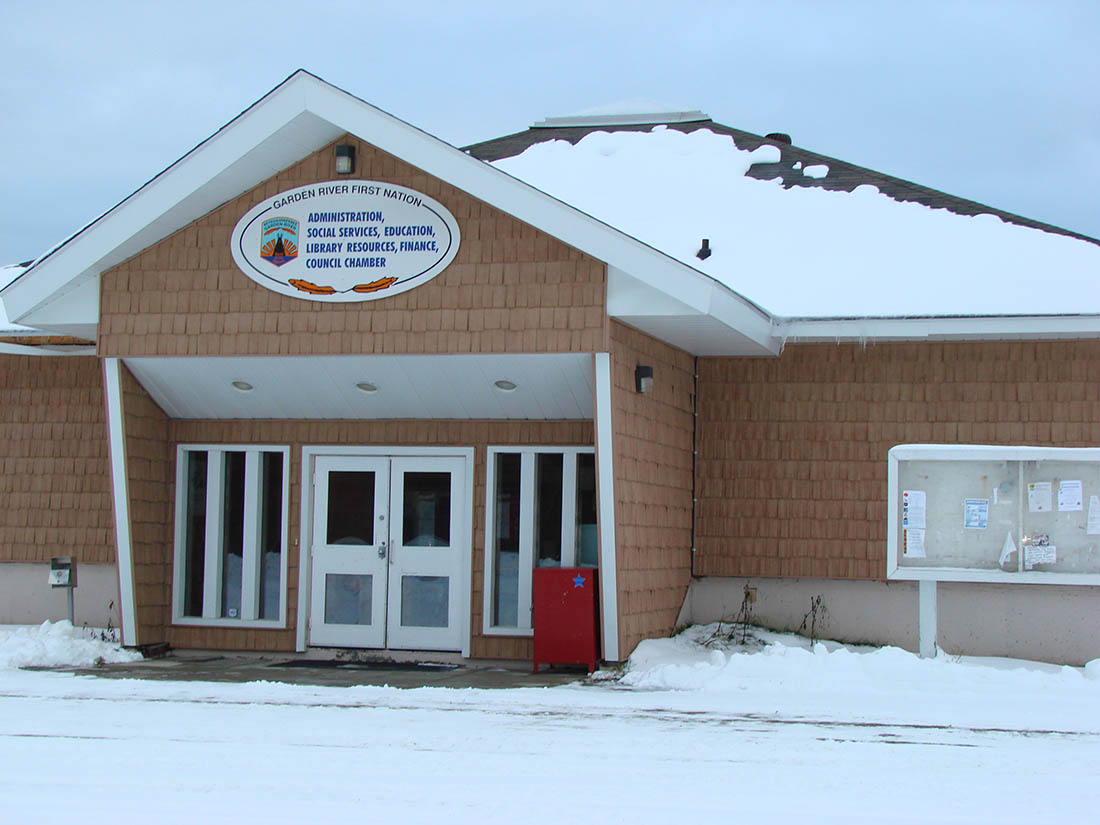John William Keating, land surveyor (born 1802 in England; died 13 August 1868 in Canada). John Keating was a land surveyor who played a key role in the surrender of Indigenous lands in Upper Canada/Canada West.
Arrival in Canada and Personal Life
John William Keating emigrated to Canada in 1831 at the age of 29. He arrived in the company of his step-father, Edward Favel Davis, mother Elizabeth Jane Frances and younger brother Horace Keating. Trained as a civil engineer and surveyor in either Britain or India, Keating was formally certified as an Assistant Land Surveyor for the Province of Upper Canada in 1832. After seeking to join an exploration party to northern Lake Huron in 1834, Keating moved to St. Joseph’s Island, Lake Huron, in 1835. In 1937, he married Julia Marie Paladeau, a Catholic woman of French and Anishinaabe descent. From 1837 to 1859, the couple had 11 children. His wife and her family connections in the Upper Lakes gave Keating access to Anishinaabeg and Métis leaders. These relationships also enabled him to learn Anishinaabemowin. Their home and sawmill site at Point Grondine was questionably acquired during the 1852 surveys of First Nations reserves under the terms of the 1850 Robinson-Huron Treaty. The site became known as “Captain Keating’s Old Location.”
Career and Controversy
In 1838, during the Upper Canada Rebellion, John William Keating offered to raise Indigenous warriors to fight on behalf of the Crown. While the offer was declined, he was appointed as an acting Assistant Indian Superintendent for the Lower St. Clair River. His position was made official in 1838. He worked for the Indian Department until his termination for corruption on 30 June 1845 (see also Federal Departments of Indigenous and Northern Affairs). During his employment, Keating engaged in various questionable activities. He participated in chief fixing, religious sectarianism and questionable practices surrounding annuity distribution at Walpole Island. Following his termination, Keating engaged in speculation and prospecting until the Indian Department re-employed him in the 1850s.
Utilizing his trade and family connections Keating learned about various mineral deposits along the north shores of the Upper Lakes. As part of learning about these mineral deposits, Keating promised to support Anishinaabe claims to minerals. Keating was aware of Anishinaabe claims to the north shores of Lakes Huron and Superior, as well as a lack of treaty permitting the legal access to Indigenous lands and resources. Despite this, Keating used his prospecting knowledge to acquire a mining location. He also joined in the formation of the Huron and Sault Ste. Marie Mining Company, which would become Bruce Mines. Additionally, he joined the Quebec and Lake Superior Mining Association which would operate at Mica Bay by 1847 (see also Mica Bay Incident). These companies would eventually be sold to the Montreal Mining Company.
In August 1849, Keating wrote a letter to the editor of the Chatham Chronicle where he denounced Anishinaabe leadership and their claims to the land and resources. He did this in support of crown and mineral lessees as well as his own financial and mineral interests. The following year, in 1850, the government employed Keating as a translator for William B. Robinson at Sault Ste Marie during treaty negotiations. In drafting the treaty text, Keating replaced the distance measure of leagues with miles. This resulted in reducing the size of potential reserves. He was also largely responsible for creating the treaty’s annex that contained descriptions of reserves to be surveyed and the annuity lists.
Subsequently, Keating was appointed by Canada West to assist Provincial Land Surveyor John Stoughton Dennis. His work involved determining the location of reserve boundaries and settling boundary interpretation disputes. Keating used his position to ensure that both his and his friends’ mining locations were unaffected by reserve boundaries. For instance, during the 1852 survey of the Garden River reserve, Keating insured that the majority of Arthur J. Rankin’s mineral location was excluded from the reserve. He also altered the northern boundary to exclude forest and mineral resources. In 1853, under Keating’s direction, the Fort William reserve was surveyed to be smaller than negotiated. Keating subsequently became involved in a railway scheme that sought to defraud Saugeen First Nation of its reserve in 1853 and 1854. In 1857, the Indian Department employed Keating to obtain the surrender of the Batchewana reserve on Lake Superior. Keating reported to the Superintendent General of the Indian Department Richard T. Pennefather that on 20 July 1857 he had successfully obtained the surrender. Faced with claims of fraud from Batchewana First Nation’s leadership, Pennefather rejected the Keating treaty. However, based on Keating’s efforts, Pennefather successfully negotiated a surrender of the Batchewana reserve in 1859 (see also Pennefather Treaties). Undeterred, Keating, by the mid-1860s, was involved in attempting to obtain oil leases on the Delaware and Garden River reserves. He also sought mineral leases on the Garden River reserve in 1865. Superintendent of Indian Affairs Charles Dupont opposed Keating’s efforts to secure mineral and oil leases, through bribery, and without government support, at Garden River. His death the following August ended Keating’s involvement in acquiring First Nations’ lands and resources.
Legacy
John William Keating’s actions have left a legacy of land claims for Canada, Ontario and Indigenous nations. For instance, the use of miles instead of leagues and the mis-surveying of reserve boundaries in 1852 and 1853 has led to multiple claims by the Anishinaabeg signatories to the 1850 Robinson Treaties. Yet, Keating’s attempts to negotiate mineral, oil and rail leases directly with the Anishinaabe created a paper trail that illustrates Indigenous claims to control resources and their understanding of the 1850 treaties.

 Share on Facebook
Share on Facebook Share on X
Share on X Share by Email
Share by Email Share on Google Classroom
Share on Google Classroom






